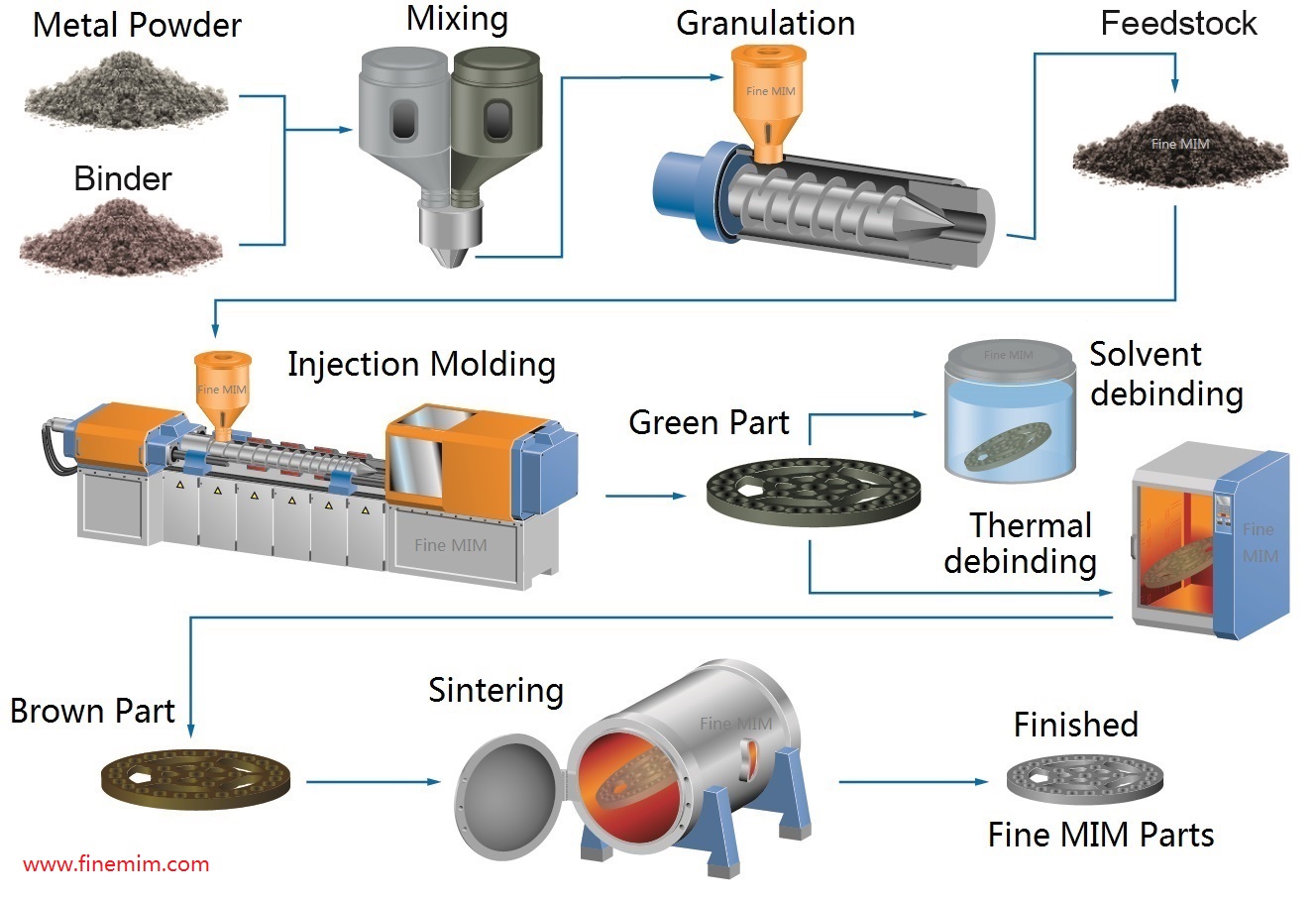Metal Injection Molding (MIM) is a manufacturing process that involves manipulating metal powders to behave like a plastic by mixing them with polymer binders to form a feedstock. This feedstock is used to injection mold net shaped, precision components. Parts are then thermally processed to remove the binder system and finally they are sintered to a high density metal component with comparable mechanical properties to wrought materials.
Intricate and complex 3D geometries that in the past have been either very difficult or very costly to produce through traditional manufacturing methods such as CNC machining, can be readily achieved with metal injection molding and at significantly reduced prices and lead-times.

The metal injection molding process consists of the following steps:
- Feedstock Mixing and Granulating– The first step is to create a powder mixture of metal and polymer. The powder metals used here are much finer (typically under 20 microns) than those used in traditional powder metallurgy processes. The powder metal is mixed with a hot thermoplastic binder, cooled, and then granulated into a homogenous feedstock in the form of pellets. The resulting feedstock is typically 60% metal and 40% polymer by volume.
- Injection molding– The powder feedstock is molded using the same equipment and tooling that are used in plastic injection molding. However, the mold cavities are designed approximately 20% larger to account for the part shrinkage during sintering. In the injection molding cycle, the feedstock is melted and injected into the mold cavity, where it cools and solidifies into the shape of the part. The molded “green” part is ejected and then cleaned to remove all flash.
- Debinding– This step removes the polymer binder from the metal. In some cases, solvent debinding is first performed in which the “green” part is placed in a water or chemical bath to dissolve most of the binder. After (on in place of) this step, thermal debinding or pre-sintering is performed. The “green” part is heated in a low temperature oven, allowing the polymer binder to be removed via evaporation. As a result, the remaining “brown” metal part will contain approximately 40% empty space by volume.
- Sintering– The final step is to sinter the “brown” part in a high temperature furnace (up to 2500°F) in order to reduce the empty space to approximately 1-5%, resulting in a high-density (95-99%) metal part. The furnace uses an atmosphere of inert gases and attains temperatures close to 85% of the metal’s melting point. This process removes pores from the material, causing the part to shrink to 75-85% of its molded size. However, this shrinkage occurs uniformly and can be accurately predicted. The resulting part retains the original molded shape with high tolerances, but is now of much greater density.
- Secondary Operations– After the sintering process, no secondary operations are required to improve tolerance or surface finish. However, just like a cast metal part, a number of secondary processes can be performed to add features, improve material properties, or assemble other components. For example, a MIM part can be machined, heat treated, or welded.